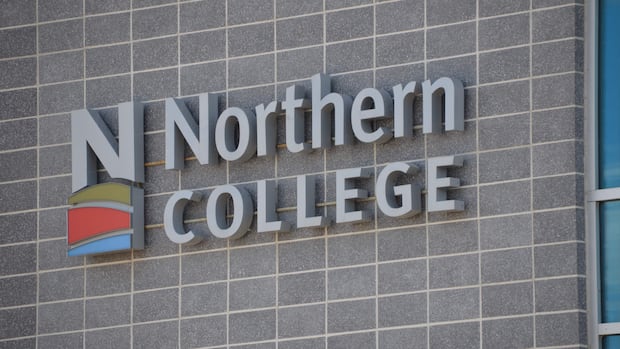Education
Northeastern Ontario Colleges Face International Permit Cuts

Colleges and universities in northeastern Ontario are grappling with significant challenges as the federal government announces stricter limits on international study permits. Starting in 2026, new study permits will be capped at 150,000 annually, a sharp decline from 305,900 this year, according to the recent federal budget. This reduction follows a trend of decreasing allocations since 2024, severely impacting the financial stability of many institutions.
The province has maintained a tuition freeze for Canadian students since 2019, compelling colleges and universities to rely more heavily on international students, who typically pay much higher fees. Mitch Dumas, president of Northern College in Timmins, reported a staggering 50 percent drop in international student enrollment compared to last year. He expressed his shock at the federal government’s decision, stating, “I was expecting a decline, but not such a significant decline of reducing the allocation again by 50 percent. It is very excessive.”
In response to dwindling numbers, Northern College has suspended 12 programs and many faculty members have taken early retirement to cut costs. Despite these setbacks, Dumas confirmed that international recruitment efforts persist, noting that a recruiter recently returned from the Philippines. “With so many significant changes over the past almost two years now, the reputation has been affected, and so it’s harder to recruit students to come to the campuses,” he added. Dumas remains hopeful that the Ontario government will reconsider its funding model for post-secondary institutions to alleviate financial pressures.
Cambrian College in Sudbury faces similar challenges, with communications manager Dan Lessard acknowledging that the latest reductions will exacerbate an already difficult situation. He emphasized the uncertainty surrounding government controls over which programs qualify for post-graduate work permits and the allocation of study permits. Nevertheless, Cambrian College is committed to recruiting international students, particularly those who may not view a Canadian education as a pathway to immigration. Lessard mentioned that while the college is facing deficits, reserve funds should help navigate this challenging period.
Algoma University in Sault Ste. Marie has described the new cap as a “significant headwind” for all post-secondary institutions. Despite the constraints, the university plans to resume first-year admissions in May and September 2026 for five programs, including music, which did not accept new students this fall.
The situation is also pressing at Sault College, where spokesperson Stephanie Pagnucco acknowledged that the reduction will be undeniably challenging. The college aims to increase its Canadian student enrollment by 17 percent next year to counterbalance the decline in international applicants.
As institutions strive to attract students, the presidents of faculty associations are urging the provincial government to lift the domestic tuition freeze and address what they term chronic underfunding. Neil Shyminsky, president of the faculty union at Cambrian College, expressed skepticism regarding potential changes, stating that the college “doesn’t have any friends in the current provincial government.” Similarly, Neal McNair, president of OPSEU local 653 at Northern College, emphasized that the latest reductions will not significantly impact revenue, as international applications have already sharply declined.
“We continue to believe that the current crisis in the college system is a direct result of the chronic underfunding that is only getting worse, coupled with a tuition freeze for the past seven years,” McNair stated. He called for increased funding to enable colleges to maintain the quality and variety of programs that contribute to Ontario’s economy.
In its latest budget, the Ontario government announced funding to support more than 20,000 spaces in science, technology, engineering, and mathematics (STEM) fields to meet the demand for skilled workers. Additionally, the budget expanded teacher education by 2,600 spaces. Following these announcements, the Council of Ontario Universities highlighted that universities still receive the lowest per-student funding in the country, indicating that more work is needed to address the funding issues facing post-secondary education in the province.
-

 Education3 months ago
Education3 months agoBrandon University’s Failed $5 Million Project Sparks Oversight Review
-

 Science4 months ago
Science4 months agoMicrosoft Confirms U.S. Law Overrules Canadian Data Sovereignty
-

 Lifestyle3 months ago
Lifestyle3 months agoWinnipeg Celebrates Culinary Creativity During Le Burger Week 2025
-

 Health4 months ago
Health4 months agoMontreal’s Groupe Marcelle Leads Canadian Cosmetic Industry Growth
-

 Science4 months ago
Science4 months agoTech Innovator Amandipp Singh Transforms Hiring for Disabled
-

 Technology4 months ago
Technology4 months agoDragon Ball: Sparking! Zero Launching on Switch and Switch 2 This November
-

 Education4 months ago
Education4 months agoRed River College Launches New Programs to Address Industry Needs
-

 Technology4 months ago
Technology4 months agoGoogle Pixel 10 Pro Fold Specs Unveiled Ahead of Launch
-

 Business3 months ago
Business3 months agoRocket Lab Reports Strong Q2 2025 Revenue Growth and Future Plans
-

 Technology2 months ago
Technology2 months agoDiscord Faces Serious Security Breach Affecting Millions
-

 Education4 months ago
Education4 months agoAlberta Teachers’ Strike: Potential Impacts on Students and Families
-

 Science4 months ago
Science4 months agoChina’s Wukong Spacesuit Sets New Standard for AI in Space
-

 Education3 months ago
Education3 months agoNew SĆIȺNEW̱ SṮEȽIṮḴEȽ Elementary Opens in Langford for 2025/2026 Year
-

 Technology4 months ago
Technology4 months agoWorld of Warcraft Players Buzz Over 19-Quest Bee Challenge
-

 Business4 months ago
Business4 months agoNew Estimates Reveal ChatGPT-5 Energy Use Could Soar
-

 Business4 months ago
Business4 months agoDawson City Residents Rally Around Buy Canadian Movement
-

 Business4 months ago
Business4 months agoBNA Brewing to Open New Bowling Alley in Downtown Penticton
-

 Technology2 months ago
Technology2 months agoHuawei MatePad 12X Redefines Tablet Experience for Professionals
-

 Technology4 months ago
Technology4 months agoFuture Entertainment Launches DDoD with Gameplay Trailer Showcase
-

 Technology4 months ago
Technology4 months agoGlobal Launch of Ragnarok M: Classic Set for September 3, 2025
-

 Technology4 months ago
Technology4 months agoInnovative 140W GaN Travel Adapter Combines Power and Convenience
-

 Top Stories3 months ago
Top Stories3 months agoBlue Jays Shift José Berríos to Bullpen Ahead of Playoffs
-

 Science4 months ago
Science4 months agoXi Labs Innovates with New AI Operating System Set for 2025 Launch
-

 Technology4 months ago
Technology4 months agoNew IDR01 Smart Ring Offers Advanced Sports Tracking for $169










